A look at the jaw-dropping, pixelicious delights of Super Hi-Vision, a video format that's still years away from retail reality
WASHINGTON -- At a recent invitation-only demo, Comcast Corp. (Nasdaq: CMCSA, CMCSK) and NBCUniversal LLC offered a peek at a possible future for TV: Super Hi-Vision (also referred to as Ultra-HD and 8K), a format that produces about 16 times the resolution of today's HDTV images.
Being pioneered by NHK, Japan's public broadcaster, 8K has gotten a couple of recent showings at the Comcast/NBCU headquarters here. The demo earlier this week (following a similar event here last week) used a sampling of Summer Olympics coverage from the BBC that was shot with Super Hi-Vision cameras. (See A Glimpse of Ultra-HD .)
And it was quite the undertaking just to get that content into the building and onto glass. They used Internet 2 to ship the video across the ocean and a dedicated Comcast fiber to take it the rest of the way. And Super Hi-Vision sure gobbles up the bandwidth. The special camera pours out video at 48Gbit/s. The compressed transport stream (using H.264 compression for this demo) that was eventually fed to the 85-inch NHK/Sharp prototype 8K display still weighed in at 360Mbit/s.
Click on the image below to start a slideshow of the demo and some of the brains and gear used to power it.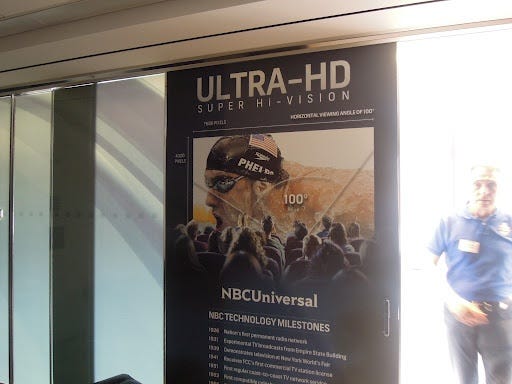
Executives and engineers running the event stressed that this was strictly a technology demonstration run with prototype equipment -- as you can see in some of the later photos in the slideshow.
A smattering of 8K prototype sets emerged at the Consumer Electronics Show in January, but the technology isn't expected to become a retail phenomenon for a while. NHK, which supplied most of the prototype equipment used for the demo, doesn't expect to roll out Super Hi-Vision services commercially until 2020. However, there's a recent report suggesting that the broadcaster could start those transmissions up to four years earlier than expected.
There's still no telling when U.S. cable operators will roll out 8K. At The Cable Show this year, much of the discussion was around 4K and hopes that the industry could offer some video in that format in roughly the same bandwidth that they use today for an MPEG-2 HD channel.
Engineers acknowledged that they'll need a lot of help getting there. For starters, they'll need High Efficiency Video Coding (HEVC), also known as H.265, a more efficient compression technology standard that's in the works. And they'll likely have to take advantage of perceptual modeling techniques that can subtract bits away from areas of the TV screen that don't get much attention from the human eye.
In case you missed it, here's a brief video blog about the event:
— Jeff Baumgartner, Site Editor, Light Reading Cable
Poster Boy
The stand-up promoting Super Hi-Vision was nice looking and all, but not nearly as impressive as the TV images that we were about to feast our eyes on.
Super Hi-Vision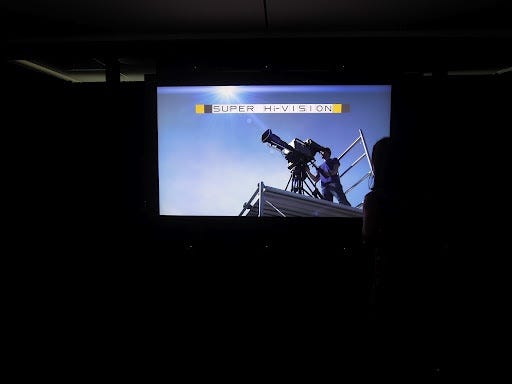
Just to remind everyone why we stopped by.
Rings of Fire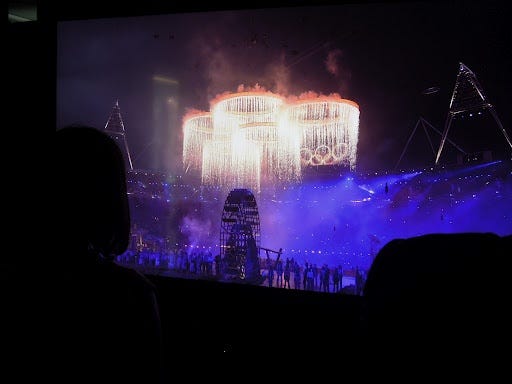
Taking a picture of an 8K image doesn't do it justice, but the opening ceremonies in London were sure sparkly.
Pretty in Purple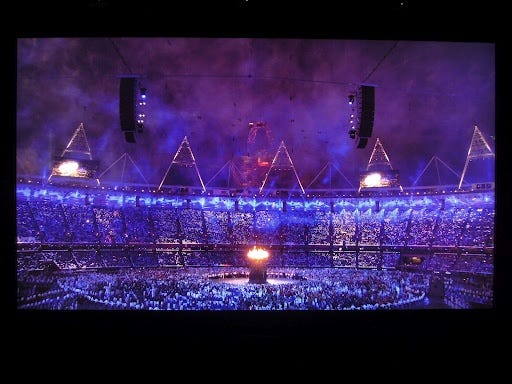
Another shot from the Olympics opener.
8K Chatter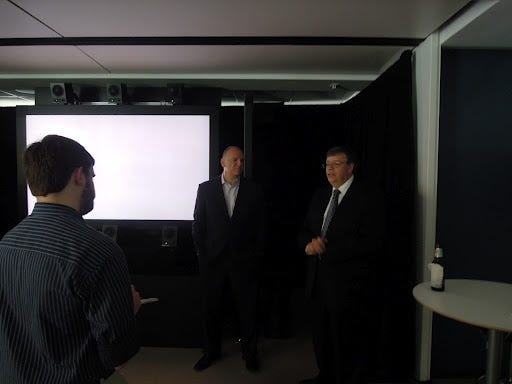
Kyle McSlarrow, president of Comcast/NBC Universal, Washington, D.C., and Glenn Reitmeier, NBCU's SVP of advanced technology (far right), set the table on Ultra-HD and described some of the pains it took to get the video shipped across the pond for our viewing pleasure.
Speakers Here, There ... Everywhere!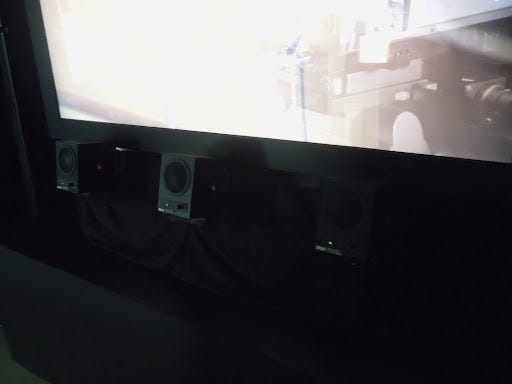
Super Hi-Vision supports 22.2 multichannel sound, and here are just three speakers that helped not just to surround, but to engulf, the room in 3-D sound.
Blinded by the Light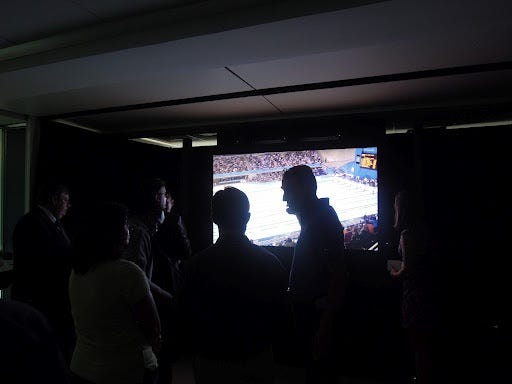
Forget what your mom told you. ... Visitors were encouraged to come right up close to check out the format's super-duper resolution.
Come On In
The water's fine. And maybe you'll get more than a drop of the budding format by 2020.
Behind the Curtain
Here are some of the brains that drove the demo.
Encoders Galore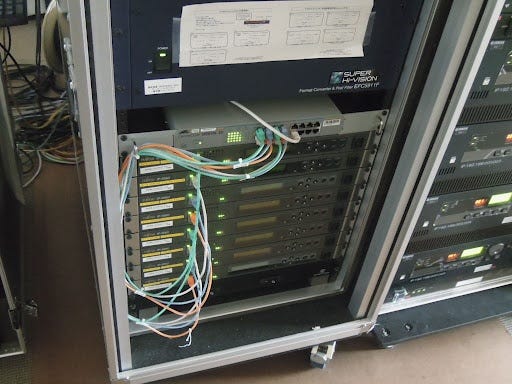
The demo used eight encoders to create eight separate images that, when stitched together, created the full Super Hi-Vision image. Not exactly practical, but we're talking prototype technology here.
Don't Be So Proud of Your 5.1 Channel Sound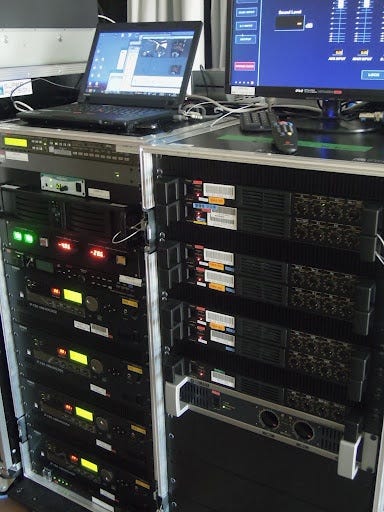
Here's some of the backend gear that powered the demo's ear-bleeding 22.2 channel audio system.
Fiber Link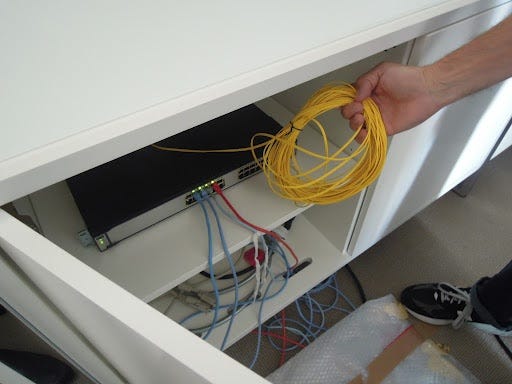
Comcast strung a fiber to get the 8K video feed into the room. The compressed H.264 transport stream was a whopping 360Mbit/s.
TV Power
Six power cables were fed to the room for the demo.
Track & Field
More of the 8K demo.
Runnin' on Empty...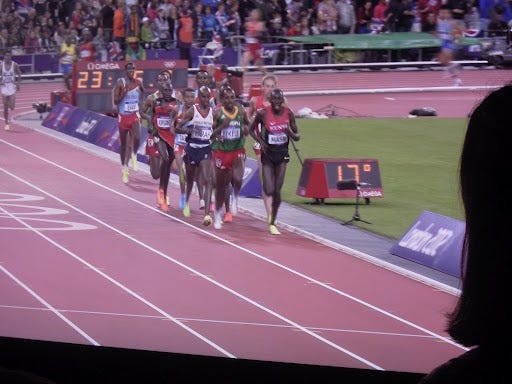
But the screen's full of pixels!
Bolt of Lightning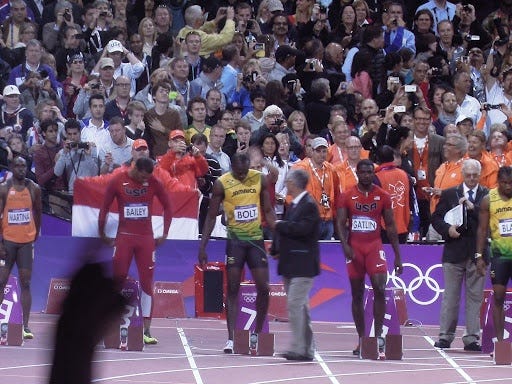
Usain Bolt kicked even more butt in Super Hi-Vision.
About the Author(s)
You May Also Like











